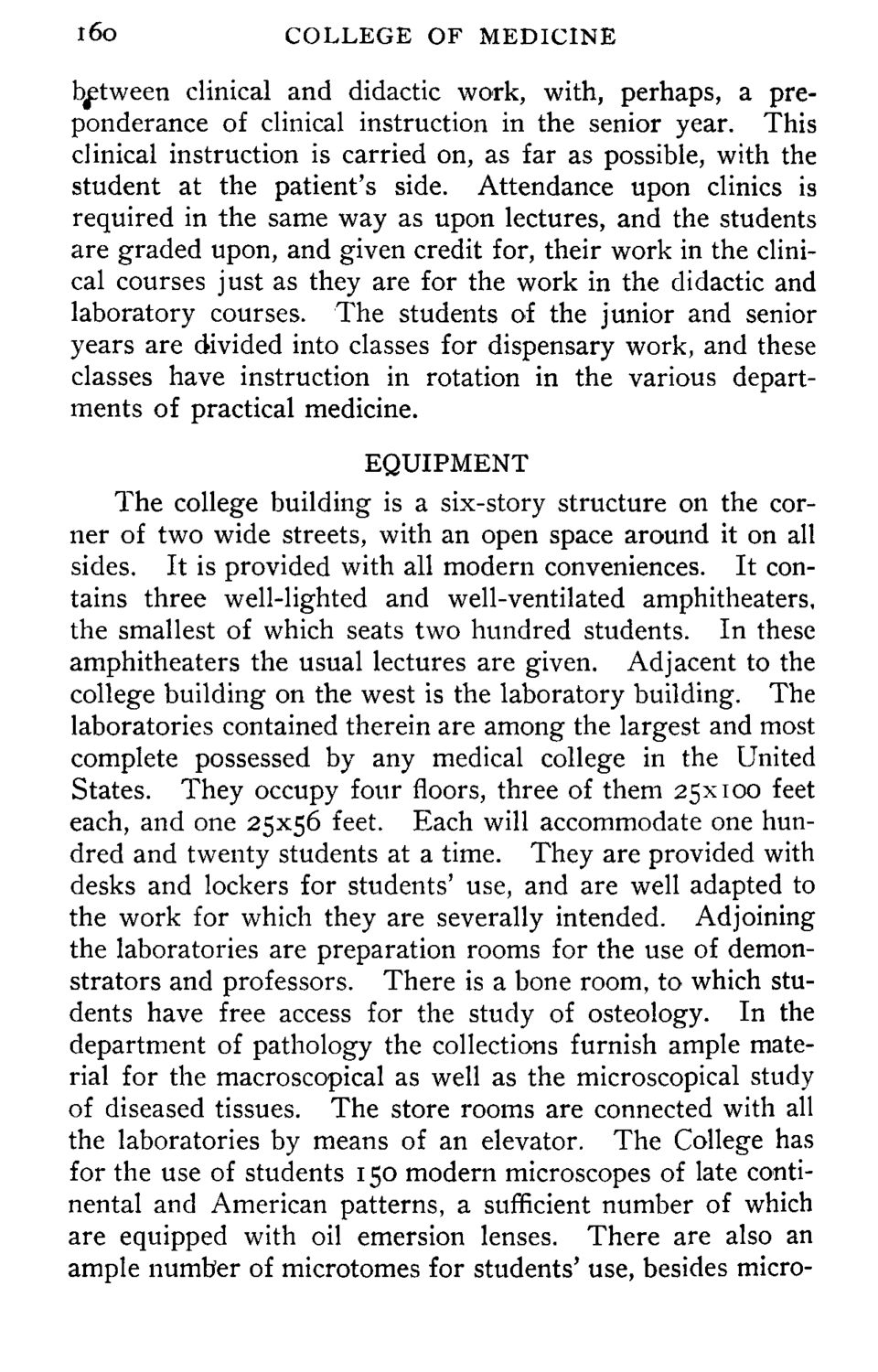| |
| |
Caption: Course Catalog - 1899-1900
This is a reduced-resolution page image for fast online browsing.

EXTRACTED TEXT FROM PAGE:
160 COLLEGE OF MEDICINE between clinical and didactic work, with, perhaps, a preponderance of clinical instruction in the senior year. This clinical instruction is carried on, as far as possible, with the student at the patient's side. Attendance upon clinics is required in the same way as upon lectures, and the students are graded upon, and given credit for, their work in the clinical courses just as they are for the work in the didactic and laboratory courses. The students of the junior and senior years are divided into classes for dispensary work, and these classes have instruction in rotation in the various departments of practical medicine. EQUIPMENT The college building is a six-story structure on the corner of two wide streets, with an open space around it on all sides. It is provided with all modern conveniences. It contains three well-lighted and well-ventilated amphitheaters, the smallest of which seats two hundred students. In these amphitheaters the usual lectures are given. Adjacent to the college building on the west is the laboratory building. The laboratories contained therein are among the largest and most complete possessed by any medical college in the United States. They occupy four floors, three of them 25x100 feet each, and one 25x56 feet. Each will accommodate one hundred and twenty students at a time. They are provided with desks and lockers for students' use, and are well adapted to the work for which they are severally intended. Adjoining the laboratories are preparation rooms for the use of demonstrators and professors. There is a bone room, to which students have free access for the study of osteology. In the department of pathology the collections furnish ample material for the macroscopical as well as the microscopical study of diseased tissues. The store rooms are connected with all the laboratories by means of an elevator. The College has for the use of students 150 modern microscopes of late continental and American patterns, a sufficient number of which are equipped with oil emersion lenses. There are also an ample number of microtomes for students' use, besides micro-
| |